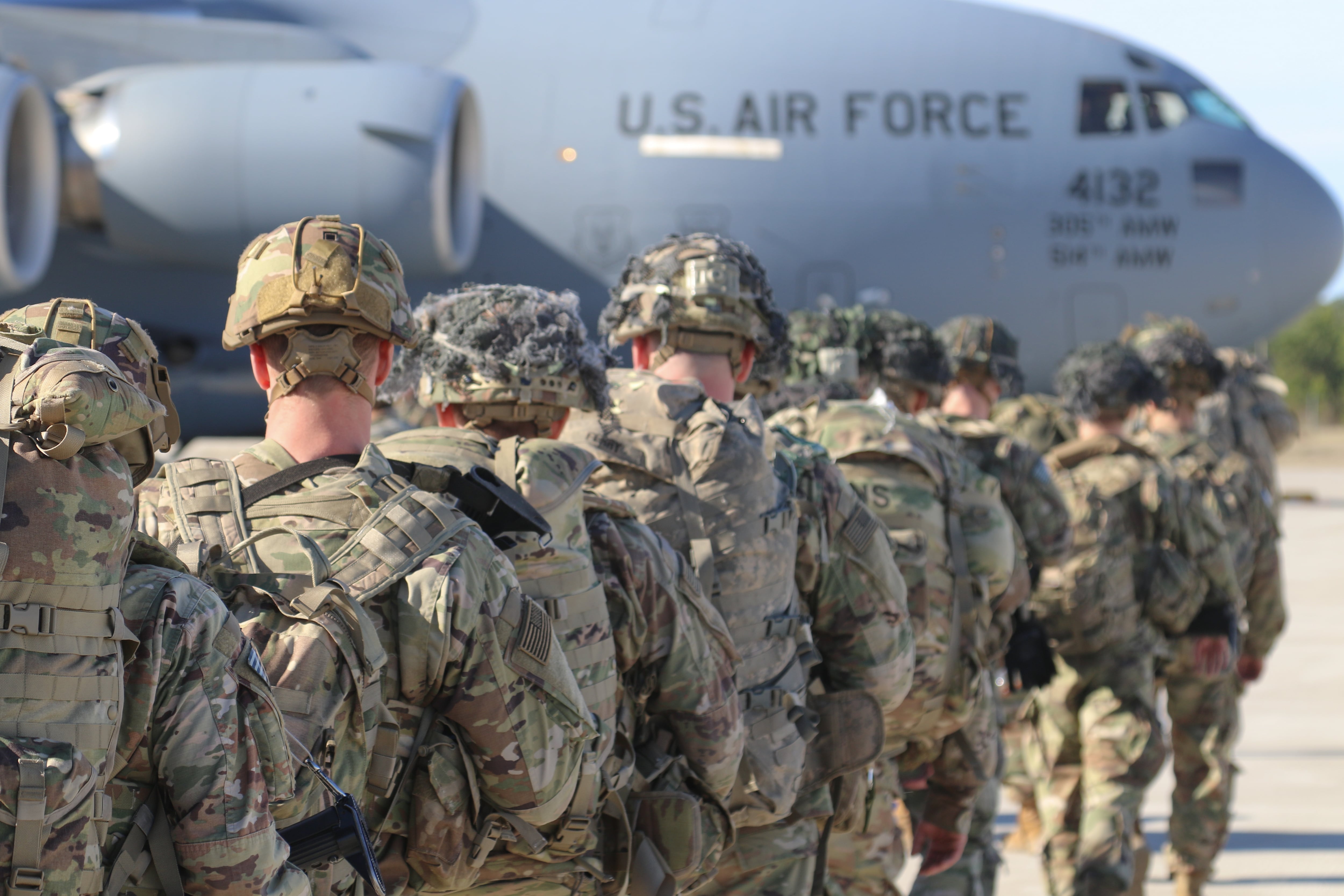Military leaders have said future battlefields will be contested and congested, an environment that will require the seamless transfer of data between networks, systems, platforms and especially U.S. military services.
Now, at the direction of the Joint Staff, the services are beginning to work together on common frameworks for networks under the banner of what the Department of Defense is calling Joint All Domain Command and Control (JADC2).
“It’s not a system, it’s not a program, it’s not a bunch of buzzwords, it’s reality. It’s what the senior [leaders] of the Department of Defense are expecting all the services to deliver,” Maj. Gen. Peter Gallagher, director of the Army’s network cross functional team, said at an AFCEA conference Jan. 21.
JADC2 “started about last July. That’s what we are going to deliver with our network modernization strategy.”
The Army and Air Force are partnering in the network space, as first reported by Breaking Defense.
Gallagher told C4ISRNET that over the past few months the Army had begun to engage with the Air Force at the colonel level, but more recently representatives from Program Executive Office Command, Control, Communications-Tactical (C3T), the Mission Command Center of Excellence and the Futures and Concepts Center have gone to various Air Force bases for meetings and demonstrations.
Gallagher as well as Maj. Gen. David Bassett, the head of C3T, went to Eglin Air Force Base at the end of last year for a demonstration of the Air Force’s Advanced Battle Management System (ABMS). Then a few weeks ago, Gallagher, Gen. John Murray, the leader of Army Futures Command, and other Army leaders went to Nellis Air Force Base to learn more about Air Force efforts.
ABMS is the Air Force architecture to connect a variety of platforms.
Bassett told C4ISRNET that Pentagon leaders recognize that no single service contribution will be able to meet all the needs for the joint force. As a result, teams are cooperating on a common concept.
“There are some things that can be common across the joint force and we’re absolutely committed to working with the other services to identify what elements of the architecture can be common,” Bassett said. “We’re working predominantly with the Air Force here, early on, as they look at their ABMS architecture. We’re looking at areas where we can bring Army solutions to show that they can become part of that in an interoperable and seamless way.”
ABMS is the Air Force’s contribution while the Army’s tactical network modernization effort — the integrated tactical network — is its piece.
The integrated tactical network its contribution is made up of a mix of existing programs of record and commercial off-the-shelf capabilities and is expected to improve communications and situational awareness from command post to the tactical edge. Portions of it will be delivered to units every two years adding in more capability as technology matures.
RELATED

Bassett said other areas the Army envisions as potential contributions are the Tactical Intelligence Targeting Access Node — a new Army program that is billed as the service’s generation ground control station — on the sensor side, the Command Post Computing Environment and the data fabric the Army wants to build as it approaches its capability set for 2023.
The Army has also begun to partner with the Marine Corps to ensure they have strong links with their ground partners as well. Already, senior leaders have plans for near term future meetings to work on the technical parameters of a new common network architecture.
Gallagher said ultimately there won’t be one primary system, but rather a series of systems that are interconnected.
“What are those application processing interfaces needed in the architecture and network design that’s going to allow the data to flow so over time this aspirational goal of any sensor any shooter any C2 node near real time with the right authorities,” he said, adding this is still all very notional. “I think the ability to set your computing environment on echelon and with common standards is going to allow that to flow.”
PEO C3T has shared some of its technical information such as application processing interfaces and software development kits with key stakeholders, Gallagher said.
“There’s some areas where the Army has been leaning forward very heavily and others where the Air Force, I think, is establishing very clean, clear framework for the way they envision data flowing,” Bassett said. “We’re in the process of iterating on that”
Ultimately, this comes down to being a better and more integrated joint force fighting toward a common goal.
“We’ve got to get past buzzwords and bumper stickers and get down to the brass tacks of what are the technical specifications and how are we going to interface as a joint force,” Gallagher said.
Mark Pomerleau is a reporter for C4ISRNET, covering information warfare and cyberspace.







